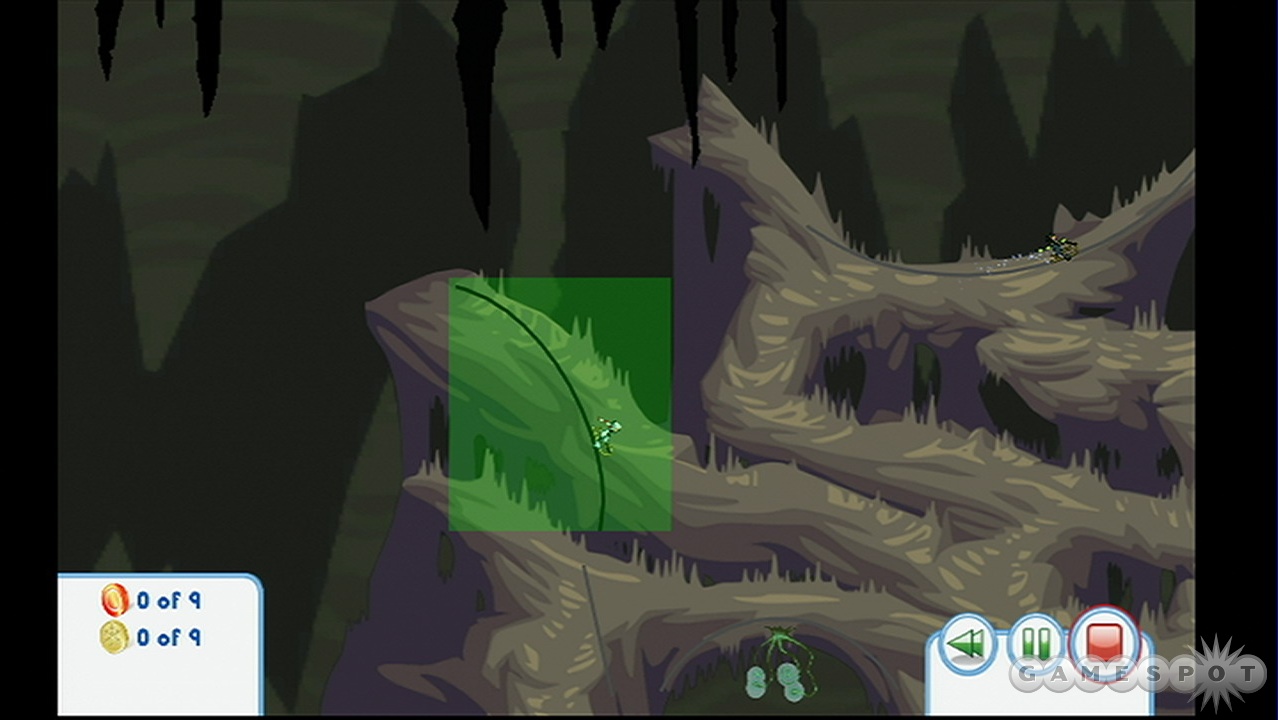The deceptively simple Line Rider started as a free Flash game. It was able to move beyond restrictions, such as not having a tangible goal or even the ability to save your hard-earned work, and ensnared a community of creatively inclined ski artists. Unbound, the first retail release of the series, has kept the simple design from the original while adding more track options, a full Story mode, and community features to share all of your work. Patience is still the key to both making your way through the maddening puzzles, as well as crafting your own zany designs to torment the community. The trial-and-error gameplay can be exhausting at times, but the overwhelming sense of accomplishment for finally figuring out a particularly difficult track makes it well worth the initial struggles.

Line Rider 2: Unbound is a 2D racing/puzzle hybrid. Your job is to guide an adventurous little boy on a sled through a series of increasingly complex courses. You have no direct control over the daredevil, though. Rather, you have to fill in missing pieces of the track to get him safely to the finish line, battling physics and gravity all the while. The learning curve is crushingly steep in the early going, especially if you never tooled around with the original game. You are placed in a course then told to collect coins and finish the level, but there is little explanation on how to accomplish this feat. It will take a lot of experimentation before the mechanics click, but once they do, you'll be happily curving lines to fling riders to seemingly unreachable paths or through dizzying loop-the-loops.
The Story mode is where novice riders will need to get their feet wet before jumping into the more complex creation tools. The tracks are already constructed for you, only with key pieces removed. In these specific sections, you can lay down different track types to keep your rider moving. The normal line lets gravity do its work; acceleration or slowdown lines directly affect your rider's momentum; and breakable lines disappear after you touch them. You can manually draw your own lines if you want, but you'll have a lot more success just bending straight lines with the curving tool. Bending and placing lines feel precise using the Wii Remote, but it can be tiring manipulating lines until they spit out your rider at the perfect trajectory. Trying to hold the controller steady as you make almost microscopic adjustments to the track adds a layer of difficulty not found in other versions of the game.
The open-ended nature of the puzzles gives rise to some crafty solutions, but it also puts far too much emphasis on trial and error. The physics system can be overly sensitive, causing you to fly wildly with every little bump in the road. Because of this, puzzle-solving usually involves drawing a basic line and then repeatedly tweaking it until you pass that particular stretch of terrain. Because there are no rules for how you get your rider across the finish line, it makes it extremely rewarding to pull off an insane flip or land a death-defying jump. However, it can be frustrating performing minute alterations to your lines until you figure out the exact trajectory you need to make it across a bottomless pit. This problem is compounded in later levels when a second rider is thrown in, making you constantly switch between segments of the track as you try to coordinate a flawless run through insane levels.
If you grow tired of trying to solve the sometimes exhausting premade levels, you can design you own to impress an entire community of line riders. The editing tool is incredibly deep, letting you piece together whatever sadistic sled-riding designs you can imagine. You'll have to actually solve your own puzzle before you can upload it to the community Web site, which will mercifully save someone from downloading and fruitlessly trying to solve an impossible course. In fact, most of the value for this package comes from this feature. The original browser game was a simple creation tool that ate up hours of people's time. With more track types and the ability to share your work, this should keep slope aficionados busy for a long time.

The visuals in Unbound are as simple as the gameplay, but they satisfy in surprising ways. Despite the cartoony aesthetic, the impact from a particularly nasty wreck is extremely gratifying. Riders exhibit a surprising amount of pain when they slam into walls and flip head over heels through a loop, which produces joy even when you're struggling to solve a puzzle. The physics are also quite impressive; your rider will react to every bump in the road, quick change of speed, and ramp to nowhere with surprising realism. Though the trial-and-error nature of the puzzles is never eliminated, once you fully understand how your rider will react to obstacles, it makes the experience more predictable and rewarding.
It's hard to escape from Line Riders 2: Unbound's grip once it seizes hold of you. This simple puzzle game packs a surprising amount of depth, making hours fly by as you desperately try to pass a tricky course or baffle your friends with a crazy concoction of your own. Keeping a steady hand can be as difficult as solving puzzles in the Wii version, so be prepared to take frequent breaks to rest both your hand and your mind. It's a shame most puzzles rely on sheer perseverance instead of skillful line placement, though, and the learning curve is far too steep in the early stages. If you have the patience to learn the subtleties of sled-track design, there is a lot of value in this little package.